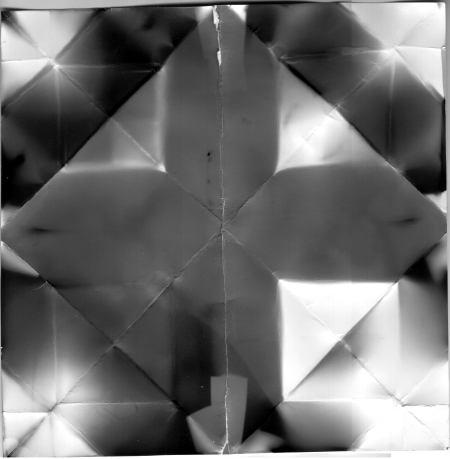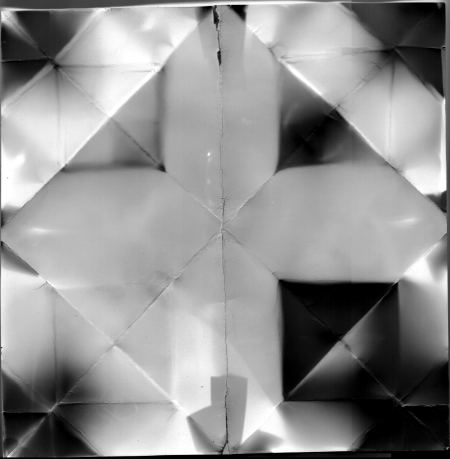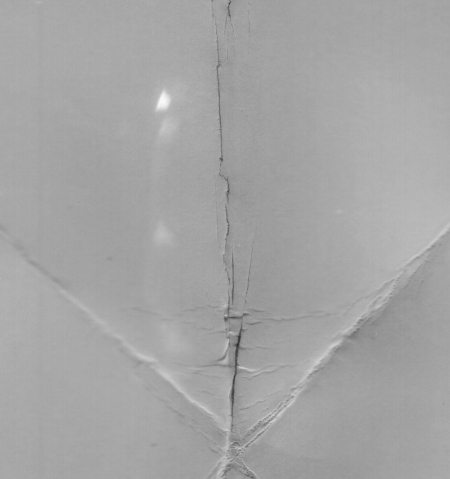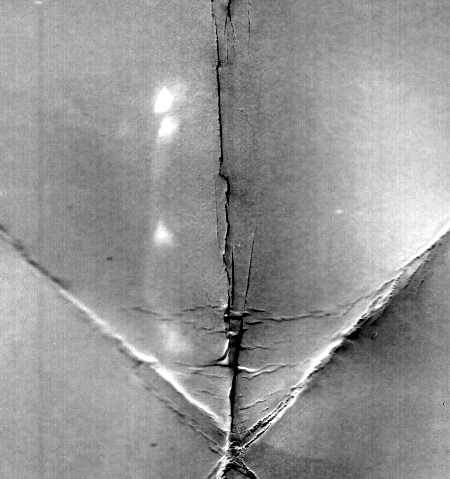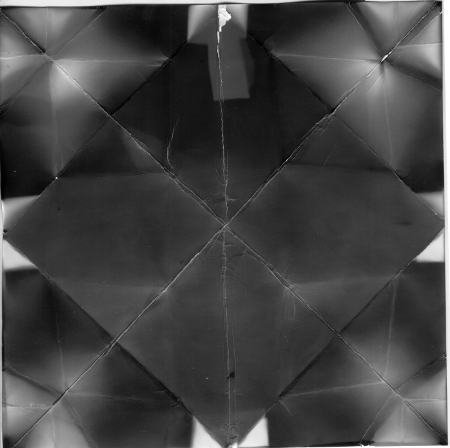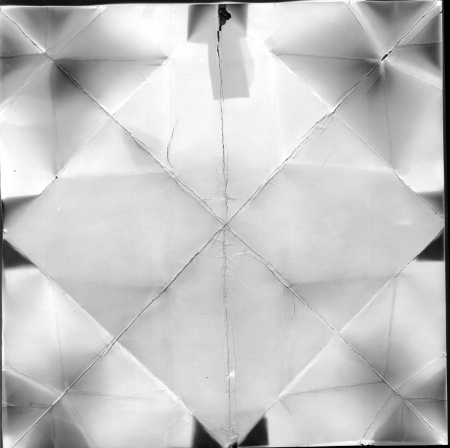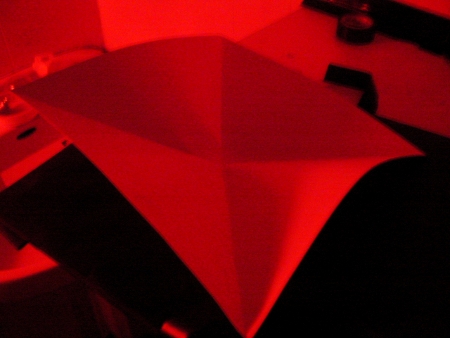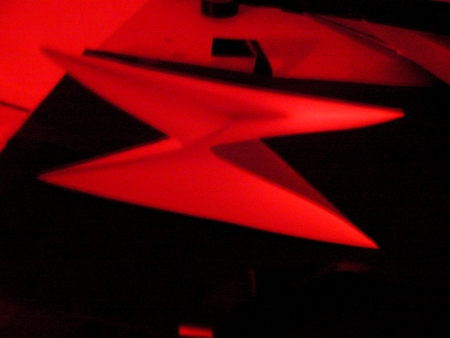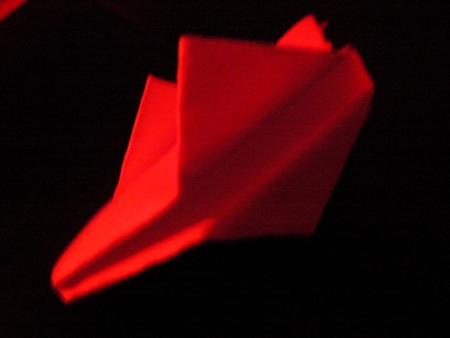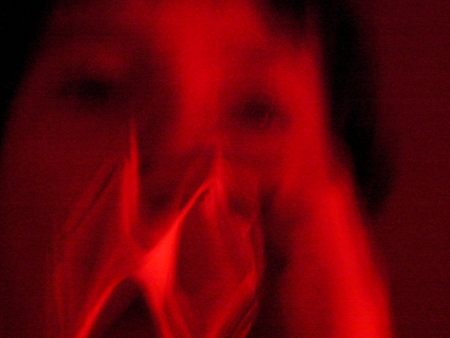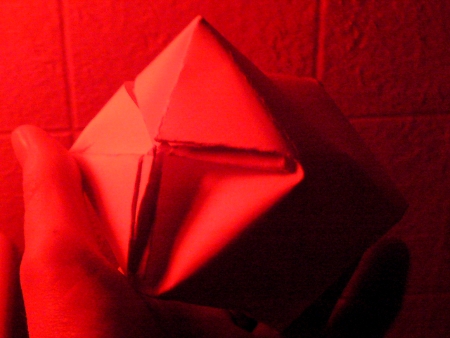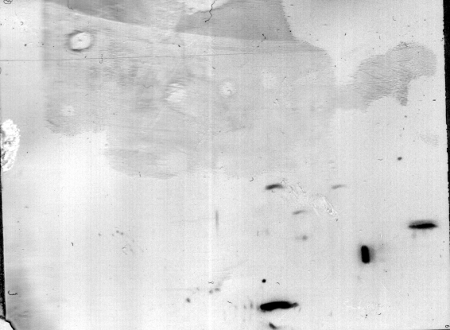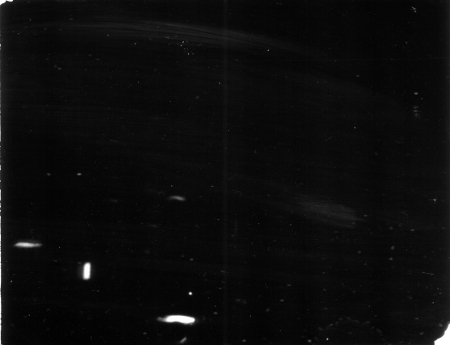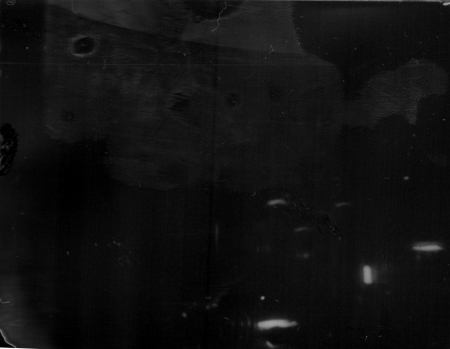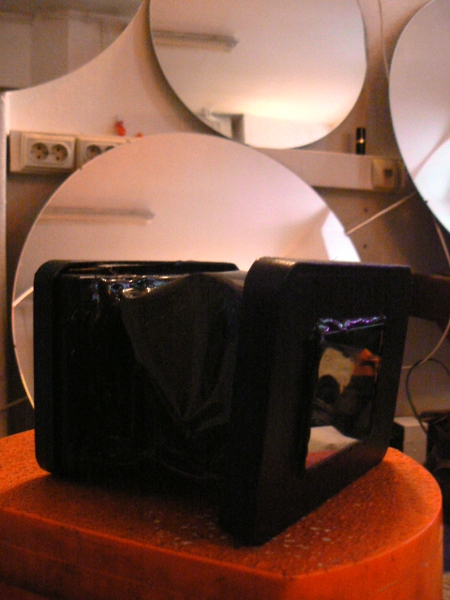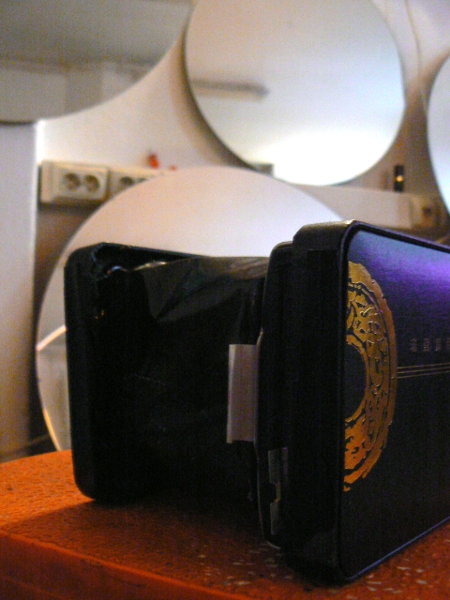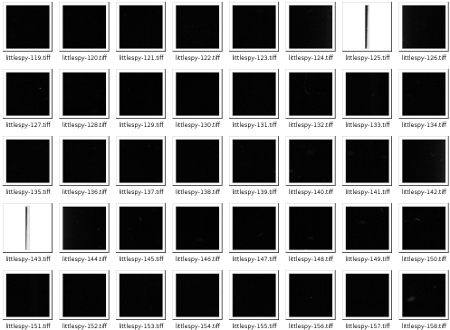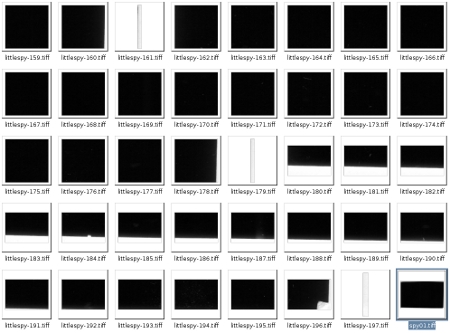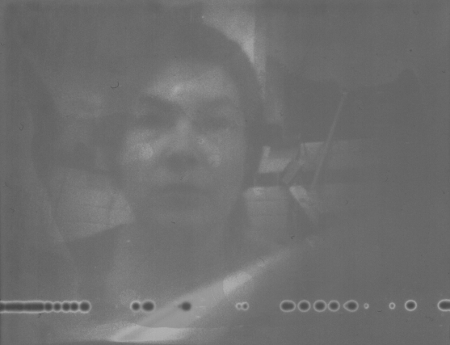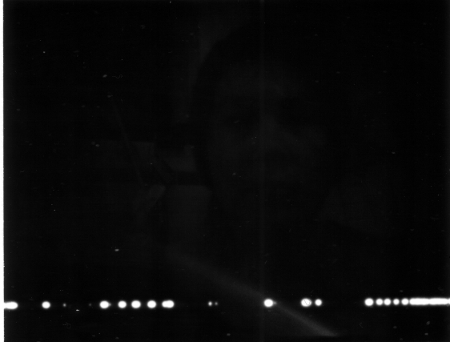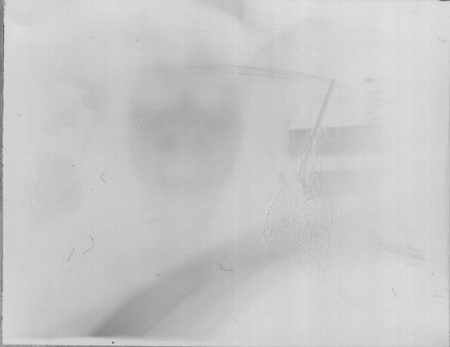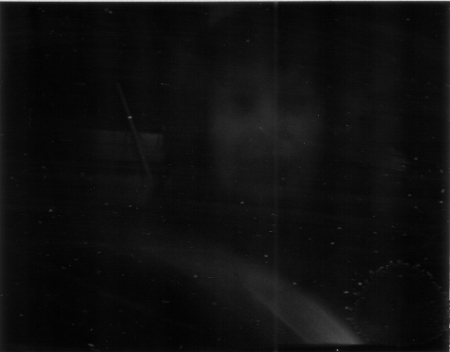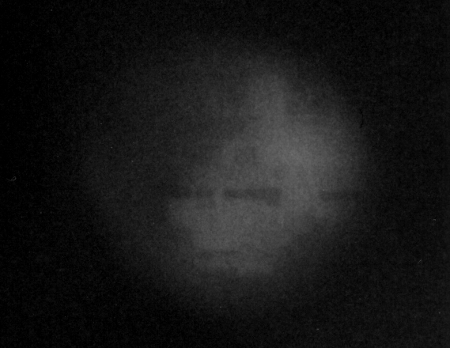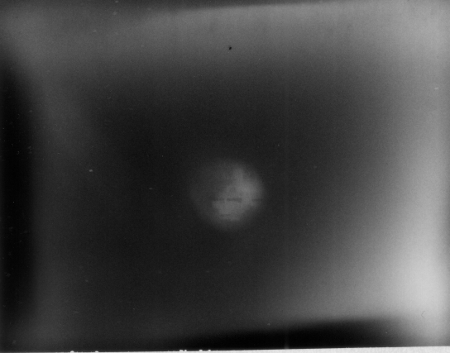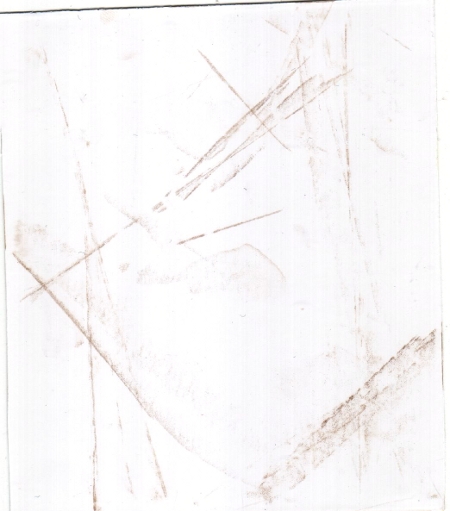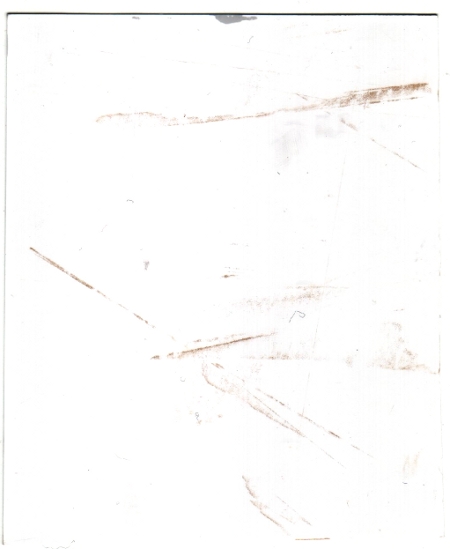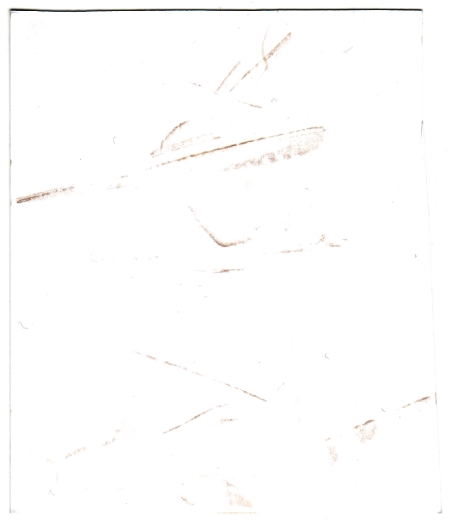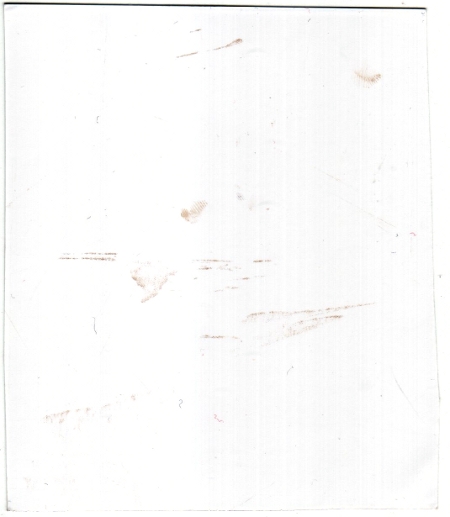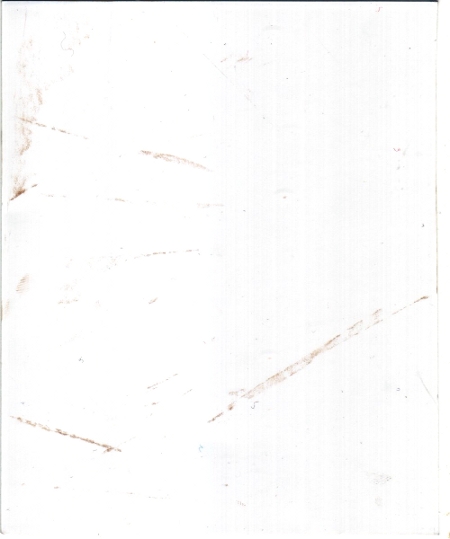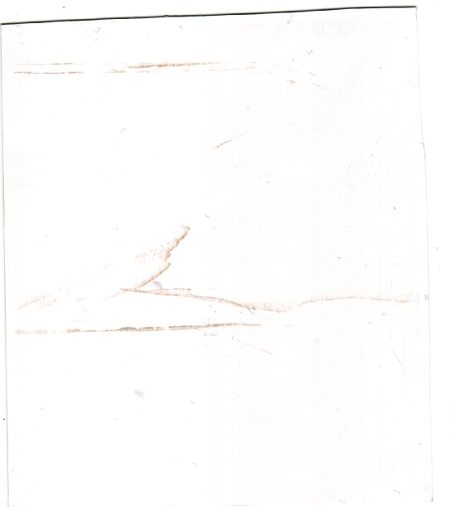
Spy mirrors are half transparent glas mirrors. Given certain light conditions it is possible to see through the mirror from one side – a darkroom – and to see your reflection from the other side – a bright room. This is caused by the extremely thin coating of the reflection layer, that reduces the transmissibility to about 8 or 9 percent.
Step 1: In this experiment I placed a photographic paper behind the spy mirror and sealed it with a black light tight cardboard from behind. I exposed the mirror to my face under daylight circumstances for about half a minute. Reflection and absorbtion. I am standing in the light and naturally I see my own reflection, whereas the photographic paper, the spy, sits in the darkroom and observes the other side, me. It is not only observing me, but with the observing process it absorbs the little light that the thin mirror coating leeks through which at the same time exposes the paper.
Reflection and absorbtion, all witnessed by the spy behind the mirror.
Step 2: Processing the photographic paper.
Step 3: Blow up the received image – which turned out to be black, of course – to my maximum possibilities, and search for clues.
In my prior thoughtographic experiments I have always been stricly excluding natural light not to overexpose the fragile visible signs of thoughts, assuming that the light might be too powerful. Now i am trying to use this very light as a possible carrier maybe to find some clues about the invisible made visible in the very darkness of overexposure.
